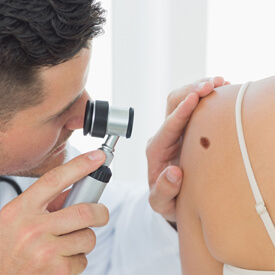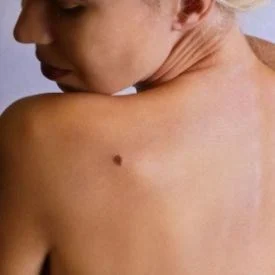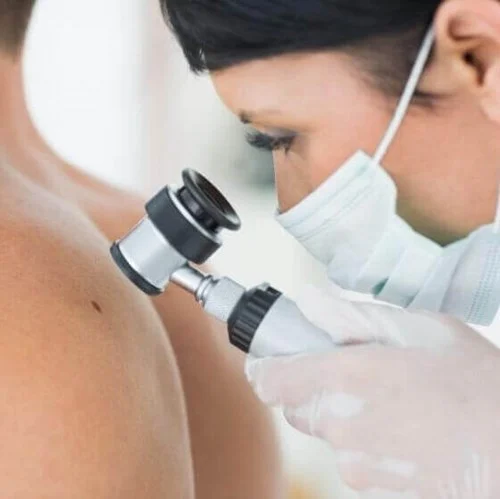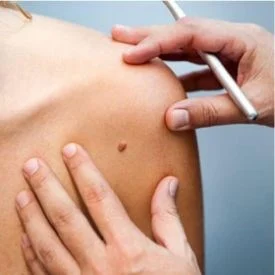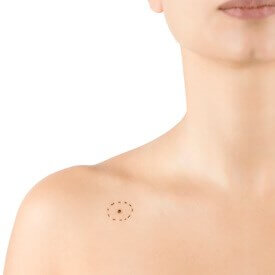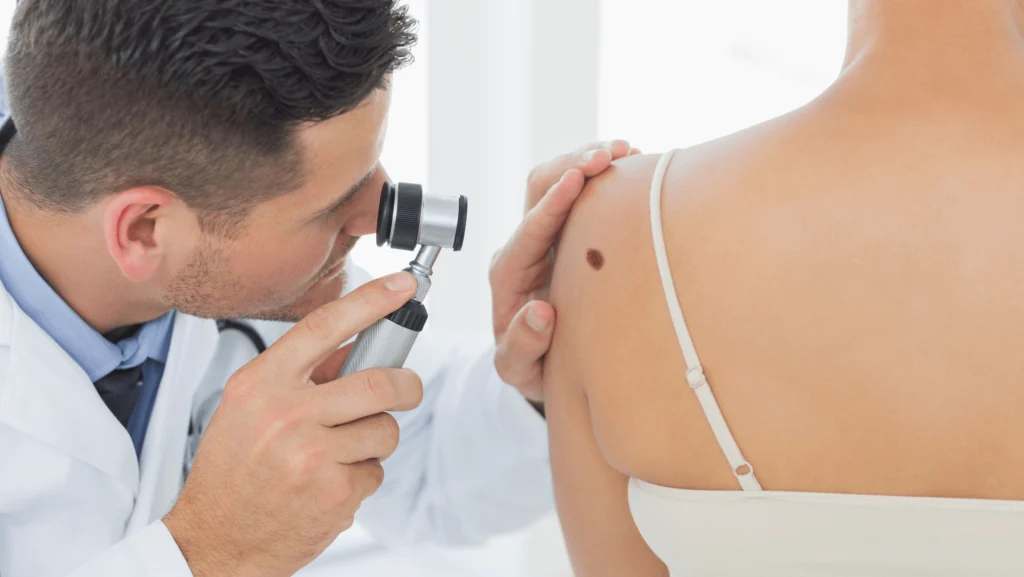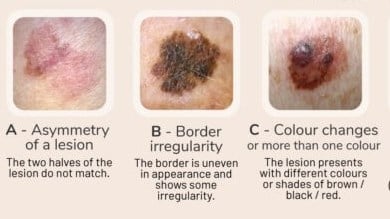What can be done to reduce the risk of developing more skin cancer if they have already had basal or squamous cell skin cancer?
Mohs Skin Cancer Surgery in Fort Washington, PA
ABOUT MOHS SKIN CANCER SURGERY
For Mohs Surgery patients NEW to Dr. Saxena, please complete our pre-visit questionnaire.
Cancer is a scary word, but for women and men who are diagnosed with certain types of skin cancer, the cancer typically does not pose a major threat to the patient’s overall health, rarely spreads inside the body, and can be safely and effectively treated. Dr. Aradhna Saxena of the Dermatology and Skin Cancer Institute is a board-certified dermatologist, fellowship-trained Mohs surgeon, and skin cancer specialist. Mohs (pronounced “moze”) surgery is the most thorough skin cancer removal method available and offers the highest cure rate for skin cancer – over 99%. Mohs Surgery is a state-of-the-art specialized procedure that carefully and precisely removes skin cancer cells layer by layer, and examines the entire surgical margin. Because the skin cancer is removed in thin layers, the technique is very precise and preserves the maximum amount of normal skin. The aim of the procedure is to completely remove the skin cancer while damaging or removing as little healthy tissue as possible.
The Mohs surgical technique is used to treat squamous and basal cell carcinomas and a few other less common types of tumors. Dr. Aradhna Saxena will begin this procedure by slowly and carefully removing the cancerous tissue one layer at a time. The tissue is processed in the office and applied to slides so the tissue pathology can be reviewed under the microscope and 100% of the margin can be examined. After each and every layer, Dr. Saxena will examine the cellular makeup of the skin tissue to determine if any cancer remains.
IDEAL CANDIDATES
The Mohs surgery technique is typically used to treat the two most common forms of skin cancer, squamous cell carcinoma and basal cell carcinoma, as well as a few other skin cancer subtypes. If you are suffering from melanoma or another form of rare skin cancer, a consultation will help determine if you are a candidate for Mohs surgery or excisional surgery. In addition to the specific type of skin cancer you have, there are also other qualifying criteria that make you a good candidate for Mohs surgery.
What appears on the surface of the skin can often be the “tip of the iceberg.” A poorly defined tumor can blend into the surrounding areas.
Mohs surgery is the best option if your cancer has a high risk of returning or if it has already returned after previous treatment. It is the best method for removing cancer in sensitive areas, such as the eyes, ears, mouth, or nose, though the surgery is not limited to those areas. Skin cancer lesions that are large, aggressive, and have blurred or undefined borders are also best treated with Mohs surgery.
SURGICAL TECHNIQUE
Dr. Aradhna Saxena performs Mohs surgery with local anesthetic in an outpatient surgical suite in her offices in Fort Washington, PA and Lansdale, PA. The first step of a Mohs surgery is to excise the entire visible skin cancer lesion, along with a tiny layer of surrounding skin cells. This tissue is then cut into sections, which are inked to maintain proper orientation.
The tissue is processed in our on-site laboratory. The tissue is then frozen, and extremely thin layers are shaved off its sides and undersurface and placed on glass slides. These slides are stained and covered so they can be examined by Dr. Saxena under a microscope. Any cancerous cells that Dr. Saxena finds will be marked on the Mohs map in the corresponding location. Dr. Saxena will then use the map to determine where any remaining cancerous tissue needs to be removed. This will minimize the amount of normal skin that is removed, thereby creating the smallest skin defect. Dr. Saxena will repeat this process until all detectable skin cancer is removed. So, to summarize, Mohs surgery differs from other skin cancer treatments in that it permits the immediate and complete microscopic examination of the removed cancerous tissue, so that all “roots” and extensions of the cancer can be eliminated. Due to the methodical manner in which tissue is removed and examined, Mohs surgery has been recognized as the skin cancer treatment with the highest reported cure rate.
Click here to view a video from the American College of Mohs Surgery regarding the Mohs Surgery procedure.
The length of Mohs surgery depends on several things, including how many layers of tissue need to be excised. After your procedure, Dr. Saxena will discuss the options for healing, the most common of which is a surgical repair requiring sutures.
WHAT TO EXPECT
The Mohs procedure is performed under local anesthesia as an outpatient procedure. The injections of the anesthetic may sting a little. After surgery, most patients report only minor discomfort that can be managed with over-the-counter pain relievers. Blood loss is almost always very small. During the procedure, an electronic machine will be used to seal off small bleeding vessels.
Patients are generally able to drive themselves home afterward. Although the site will be bandaged, it is possible to resume routine, non-strenuous activities the next day. This rules out any strenuous exercise or heavy activities for up to 1 – 2 weeks. If sutures were utilized, they will be removed usually within 7 – 14 days. The success rate for removing all cancerous tissue from the site is very high, ranging from 97% to 99%.
HOW DO I PREPARE FOR SURGERY?
Photograph your biopsy site
Complete Paperwork / Medical History Information
Please visit the Patient Forms section of our website. Patients can take advantage of our convenient online patient portal to complete in advance.
Up to 2 weeks before:
- If you take blood thinners such as a baby aspirin, regular aspirin, Plavix (clopidogrel), Coumadin (warfarin), or Aggrenox, it may be possible to stop one or more of these medications, but ONLY if Dr. Saxena or your physician has specifically authorized stopping.
- If you are advised to stop blood thinners, our office will tell you when to stop and restart the medication.
- If you are taking herbal medications or vitamins, it is best to stop these medications 2 weeks before surgery as they may increase your chances of bleeding and/or bruising.
1 week before: Stop alcohol
- Obtain wound care supplies such as an ace bandage, gauze, and paper tape.
The day of surgery:
- Eat your normal morning meal and bring a snack
- Wear comfortable, casual clothing
- Take your usual morning medications (except blood thinners as noted above if advised by your doctor).
- Bring any medications you will need
- You will be able to leave the office to eat or run errands in between procedures, or you can bring lunch from home
- Wireless high-speed internet and reclining chairs are available in our Fort Washington office
What to expect after surgery?
A compression bandage will be placed on the surgical site after the procedure is complete to minimize the risk of bleeding. While traces of bleeding are common, brisk bleeding is infrequent and can usually be controlled by removing the bandage, cleaning the wound, and applying firm, constant pressure with clean gauze for 20-30 minutes without interruption. If bleeding continues, you should call our office or visit the nearest emergency room.
Bruising and swelling are common after Mohs surgery, especially when treating cancers around the eyes and mouth. Ice packs applied for 5-10 minutes every hour while awake for the 24 hours after surgery can help minimize this.
Redness at the surgical site is common. If it does not improve or continues to worsen, or if warmth, pain, pus, or blisters develop, please call our office.
Numbness of the surgical site and surrounding areas is very common after surgery. It usually takes 3-6 months for the numbness to completely resolve.
Additional information about Mohs surgery can be found on the American College Of Mohs Surgery website.
Exercise after surgery?
- Avoid heavy lifting, exercise, or strenuous activity for 7 days after surgery as this may inhibit healing; contribute to poor scar formation; cause your wound to split open or bleed.
- You can resume cardiovascular exercise (walking, running, biking, etc) 4 days after surgery as tolerated
- It is best to wait at least 7 days to resume weightlifting
FREQUENTLY ASKED QUESTIONS
Why was I referred for Mohs Surgery?
The typical skin cancer does not often pose a major threat to a patient’s overall health if it is effectively treated. Mohs (pronounced “moze”) surgery is the most thorough skin cancer removal method available, and offers the highest cure rate for skin cancer – over 99%. Mohs surgery is an advanced technique for removing skin cancers layer by layer, and examining the entire surgical margin. Because the skin cancer is removed in thin layers, the technique is very precise and preserves the maximum amount of normal skin.
Do I need surgery if my biopsy site looks resolved?
A biopsy is only a superficial sample which does not address the origin or the root of the skin cancer. If left untreated, skin cancers will continue to enlarge wider and deeper, and may grow for quite some time before breaking the surface again and becoming visible.
Where and how is Mohs surgery done?
Mohs surgery is performed safely in an outpatient surgery suite in the doctor’s office. The surgeon first scrapes and removes any obvious tumor masses. Next, a saucer-shaped layer of tissue is removed from the sides and underneath the cancer. Ink marks are made on the skin and a corresponding diagram is drawn for proper orientation. The tissue is processed in our on-site laboratory and microscopic sections are made. The surgeon examines the slides and marks the diagram to show remaining cancer roots, if any. Another layer is removed only from the area where cancer remains, minimizing the amount of normal skin that is removed, and therefore creating the smallest possible defect in the skin. The specimen is processed and examined as before. Layers are taken until the entire wound is free of tumor.
How long will the surgery take?
This is difficult to know because the size of the skin cancer cannot be predicted. In general, the surgical removal of skin takes 15 minutes, followed by a 1-2 hour wait while the microscope slides are prepared and evaluated. Repairs are done once the margins are clear. Please plan to devote the entire day to surgery. You may bring a friend or relative to help pass the time, though normally, you do not need a driver.
What is the success rate?
Mohs surgery is extremely successful in the elimination of non-melanoma skin cancer. The achievement rates of eliminating all the cancerous tissue when treating basal cell carcinoma and squamous cell carcinoma approach 99%.
Is it painful?
Most patients feel very little pain or discomfort during surgery because anesthetic is used. Pain medication is rarely necessary during recovery, either. If you do experience any pain, Dr. Saxena will typically recommend an over-the-counter painkillers. Acetominophen can be alternated every 4 hours with ibuprofen for pain management. See below for more detail regarding pain management.
How big will the wound be, and can it be repaired? Will I have a scar?
The size of the wound depends on the size of the skin cancer which cannot be predicted. The average cancer requires 2 stages of surgery, so the wound will always be larger than you suspect. In addition, skin is elastic, so that the wound edges will retract, making the wound seem larger. Dr. Saxena has extensive training in reconstructive surgery and does most all repairs. Some wounds actually look better when left to heal by themselves, and others could require referral to a plastic surgeon. Dr. Saxena will discuss your options after the cancer has been completely removed. Mohs surgery allows the most attractive reconstruction, because the smallest amount of normal tissue is removed. Scarring is inevitable whenever the skin is cut, but be assured that we are committed to having you look your best and will make every effort to be sure that you are very satisfied with your surgical result.
How many visits are required?
For your convenience, pre-operative preparations are usually made over the telephone. If your medical condition warrants or you would prefer a consultation, Dr. Saxena can see you a few weeks prior to surgery to review the procedure and answer any questions you may have. A follow-up visit may be needed 1-2 weeks after your surgery to remove stitches and check the surgical site.
Will my cancer come back?
Probably not. While there is no way to guarantee success for any surgical treatment, Mohs surgery offers the highest cure rate – over 99% – for common types of skin cancer. Still, it will be important for you to return to your dermatologist regularly to be certain that the tumor does not recur, and that you do not get new skin cancers. The chances of having another new skin cancer within the next five years range from 30-50%.
Will my insurance cover the cost?
Our office participates with most of the large insurance plans. Suture removal visits are included with the initial charge for the surgery. If you belong to an HMO, you will need to call your general physician to arrange proper referrals. If you have commercial insurance, we will submit claims for you, but you will be responsible for the balance not paid by your insurance company. While most insurance companies will cover some portion of the cost, you should contact your insurance company if you have any questions regarding your coverage. If you have questions about your bill, please call our billing team. Special arrangements can be made for patients with demonstrated financial needs.
Is my surgeon fellowship-trained?
Yes, Dr. Aradhna Saxena completed 1-year of additional training after her dermatology residency to focus only on skin surgery and skin cancer histopathology. Dr. Saxena’s fellowship was accredited by the American College of Mohs surgery, the organization founded by Dr. Frederic Mohs in 1967.
Is my surgeon Board-Certified?
Yes, Dr. Aradhna Saxena successfully cleared the board examination for Mohs Micrographic Surgery in Oct 2021, the first year the board examination was given.
What does Mohs stand for?
Mohs surgery was named after Dr. Frederic Mohs, a surgeon who pioneered the treatment at The University of Wisconsin in the 1930s. Initially, Dr. Mohs removed tumors by applying a chemical, zinc oxide paste, to the tumor. The tissue was then removed and processed. The technique was performed over a few days. As the process evolved, surgeons eliminated the chemical treatment and removed fresh tissue which could be processed within a few hours and allowed the surgery and reconstruction to be performed in the same day.
Do I need a plastic surgeon?
General and plastic surgeons have traditionally not performed the Mohs surgery technique because of the lack of training in skin pathology and the time-consuming process of Mohs-style tissue processing. Frozen section pathology, which plastic surgeons can use in the operating room does not examine the skin cancer margins as thoroughly as the Mohs surgery technique.
Summary
When facing a skin cancer diagnosis, it is important to do your research and find a trained Mohs surgeon who is a good fit for your expectations and needs. Success rates of the procedure are directly related to your doctor’s skill and experience. To learn more about the experience, training, and personal success rates of Dr. Saxena, call the Dermatology and Skin Cancer Institute now and schedule a consultation. Dr. Aradhna Saxena performs Mohs surgery at her Fort Washington and Lansdale, PA offices.
PAIN MANAGEMENT AFTER SURGERY WITHOUT OPIODS
This is our algorithm for helping patients manage their pain after surgery without opioids. This provides you with the best care possible, without exposing you or your family to the risk that opioids pose.
What pain can I expect after surgery?
You can expect to have some pain after surgery. This is expected. The pain is typically worst the day of and the day after surgery, and quickly improves. Patients are able to manage their pain after surgery with Over-the-Counter (OTC) medications such as Tylenol and Motrin. If you have a condition that does not allow you to take Tylenol or Motrin, please notify us.
How will I manage my pain?
The best strategy for controlling your pain after surgery is around the clock pain control with Tylenol (acetaminophen) and Motrin (ibuprofen or Advil). Alternating these medications with each other allows you to maximize your pain control. In addition to Tylenol and Motrin, you can use ice packs on your incisions to help reduce your pain.
How will I alternate regular strength Over-the-Counter pain medication?
You will take a dose of pain medication every 3 hours
Start by taking 650 mg of Tylenol (2 pills of 325 mg)
3 hours later take 600 mg of Motrin (3 pills of 200 mg)
3 hours after taking the Motrin take 650 mg of Tylenol
3 hours after that take 600 mg of Motrin.
See example – if your first dose of Tylenol is at 12:00 PM
| 12:00 PM | Tylenol 650 mg (2 pills of 325 mg) |
| 3:00 PM | Motrin 600 mg (3 pills of 200 mg) |
| 6:00 PM | Tylenol 650 mg (2 pills of 325 mg) |
| 9:00 PM | Motrin 600 mg (3 pills of 200 mg) |
Continue alternating every 3 hours
We recommend that you follow this schedule around-the-clock for 3 days after surgery, or until you feel that it is no longer needed. Use the table on this handout to keep track of the medications you are taking.
Important: DO NOT take more than 4,000mg of Tylenol or 3,200 mg of Motrin in a 24-hour period.
What if I still have pain? If you have pain that is not controlled with the Over-the-Counter pain medication (Tylenol and Motrin or Advil) plan you might have what we call “breakthrough” pain. If this is the case, please give us a call at 215.361.3376. We will help make sure you are managing your pain in the best way possible, and if necessary, we can provide a prescription for additional pain medication.

